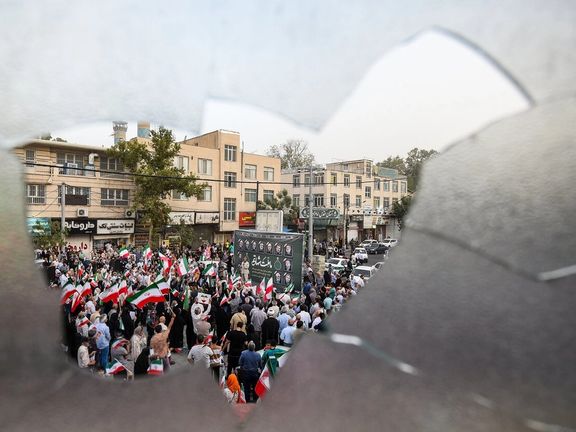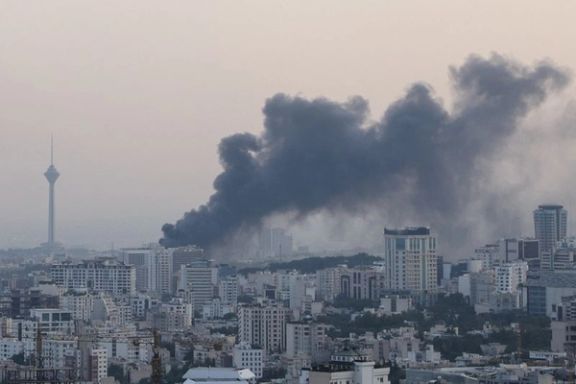A punishing war is due to cast a long shadow over beleaguered Iran

The legacy of a 12-day war with Israel which ended last month will likely be yet more economic hardship, deteriorating living standards and intensifying public distrust.

The legacy of a 12-day war with Israel which ended last month will likely be yet more economic hardship, deteriorating living standards and intensifying public distrust.
While the government portrays the conflict as a strategic victory, mounting evidence suggests a society battered, exhausted and increasingly disillusioned.
Daily life has grown more difficult, strained by chronic water and electricity shortages. Yet, despite the hardship, protests remain rare.
Beneath this calm lies a deeper frustration, voiced constantly on social media and in testimonials sent to foreign-based Persian-language broadcasters.
No shelters, no answers
While state media continue to glorify the armed forces and the Supreme Leader, many recall a different reality: missile strikes without bomb shelters, ineffective air defenses and a war waged without public support.
The Supreme Leader’s three-week stay in an underground shelter became a symbol of elite insulation. On the ground, thousands of homes were damaged or destroyed, with casualties still likely unreported.
The government’s support for reconstruction has been slow and unclear, evoking comparisons to Khorramshahr, a focus of combat in the Iran-Iraq war which remains mostly ruined decades after the Iran–Iraq War.
The official refrain that “Israeli homes were also destroyed” has brought little comfort.

Economic disruption, official deflection
At the end of the 12-day war, Iran’s Chamber of Commerce acknowledged the war’s serious impact: disrupted trade, blocked currency repatriation and shaken investor confidence.
“Government-led economics cannot improve the situation,” said Isa Mansouri, head of the Chamber’s Research Center.
The warning echoed the view from Tehran’s bazaar and stock exchange: that even limited geopolitical shocks can derail imports and daily commerce.
Pension delays are another flashpoint.
A July 23 report by state news agency ILNA revealed some retirees were still waiting for April payments. Infrastructure damage in Tehran is extensive—over 3,000 housing units were hit in District 4 alone, with no clear timeline for repairs.
To contain the crisis, authorities quietly declared unofficial “holidays” in Tehran, reducing strain on water and power utilities while avoiding transparency.
President Pezeshkian’s claim on Al Jazeera that Israel bombed water resources to deprive Iranians of access was widely ridiculed and seen as deflecting from decades of internal mismanagement.
War’s reach into private life
A study by academic Momeneh Baseri, "The Iran-Israel War and the Change in Iranians' Lifestyle", published June 21 by Azad University, highlights the war’s broad social effects—even among those far from the front lines.
Drawing on field research and crisis sociology, Baseri identified several trends:
Cinemas and concert halls remain empty. In their place: home-based religious rituals, streaming platforms, and a growing culture of isolation.

The illusion of normalcy
Even efforts to portray resilience have backfired.
A video recorded and published by moderate daily Ham-Mihan shortly after ceasefire showed quiet Tehran streets and shuttered shops.
Another report by moderate online publication Asr Iran featured returning residents—some relieved, many bracing for more strikes. “It felt good to return,” said one man on camera, “even to an unsafe home.”
Foreign observers confirm the unease.
Deutsche Welle’s Dan Hirschfeld described Tehran as “in a constant state of alert,” with many seeking to leave and economic stress visibly deepening.
Calls for fundamental change
Criticism of the government narrative is mounting.
Sociologist Taqi Azad Armaki, writing in Fararu, called for a transition “from ideological warfare to national reconstruction.”
A urged empowering the sidelined middle class and warned that the war had left Iran helpless and unable to meet basic needs.
More notably, some opposition voices—inside and outside Iran—are now discussing the formation of a “constitutional assembly.”
Though cautiously framed, it marks the clearest sign yet of openness to structural change.
Despite claims of stability, the Islamic Republic may be at its most fragile point since the 1981 bombing that killed over 70 top officials claimed by the People's Mojahedin Organization of Iran or MEK.
Then, the system had a charismatic leader in Ruhollah Khomeini and revolutionary zeal. Now, it is led by a solitary, increasingly isolated Supreme Leader with no clear path forward.